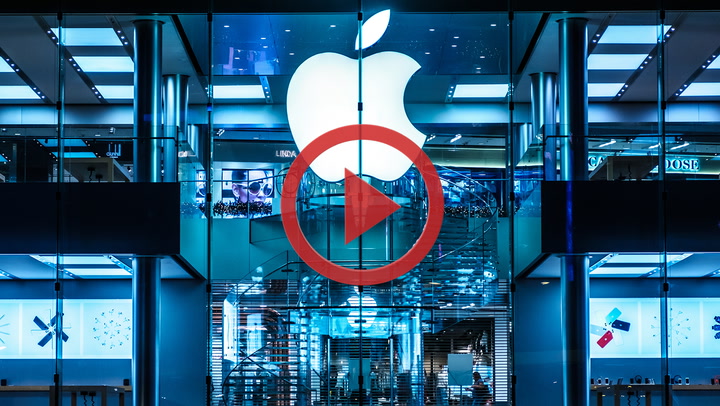- HIVE mined digital assets equivalent to 4,752 Bitcoin in calendar 2022
- For the three-month period ended December 31, 2021, HIVE produced 697 Bitcoin
- HIVE produced 213.8 Bitcoin in the month of December from ASIC and GPU mining operations, averaging 113.2 Bitcoin Per Exahash
- HIVE has installed approximately 2,050 of the 3,570 recently acquired Bitmain S19j Pro miners
- HIVE Blockchain Technologies provides infrastructure solutions in the blockchain industry, including the mining of digital currencies
- Shares of Hive Blockchain Technologies Ltd. (HIVE) opened trading at C$2.44
HIVE Blockchain Technologies (HIVE) has provided production figures from its Bitcoin operations for the month of December 2022 and calendar 2022.
Summary:
- HIVE produced 213.8 Bitcoin in the month of December from ASIC and GPU mining operations, representing an average of 113.2 Bitcoin Per Exahash.
- HIVE earned US$3.15 million in income from its energy price hedging and grid balancing strategy, in addition to Bitcoin produced in December. The income from grid balancing could equate to a mined value of approximately 184 Bitcoin.
- HIVE’s strategy to improve its global efficiency was achieved by the acquisition of 3,570 Bitmain S19j Pro at discounted prices. In addition, HIVE is pleased to deploy its own ASIC Bitcoin miner system for Proof of Work, the ‘HIVE BuzzMiner,’ in partnership with Intel.
- As a tactical update, in the last two weeks, HIVE has received and installed over 3,400 Bitcoin ASIC miners in the 100 TH/s to 110 TH/s range, which is a massive efficiency upgrade which will lower the company’s average cost of producing Bitcoin and improve gross mining margins.
- HIVE has installed approximately 2,050 of the 3,570 Bitmain S19j Pro miners announced on December 22, 2022. These machines arrived in the last week of December, and HIVE’s team expects all 3,570 S19j Pro miners to be installed on or around January 13, 2023. The installation of these machines includes an optimization process to ensure HIVE has distributed and installed the most efficient machines across its global operating fleet, thus increasing the company’s overall average Bitcoin mining efficiency and lowering the average Bitcoin cost of production.
- Additionally, HIVE has received and installed 1,423 of its HIVE BuzzMiner Bitcoin miners, powered by Intel Blockscale, out of the total production quantity of 5,800 HIVE BuzzMiners. These new generation ASIC miners will replace older legacy ASIC and GPU mining equipment to increase Bitcoin mining efficiency.
December 2022 production figures:
- 212 Bitcoin produced from ASIC mining operations
- 2.06 Exahash of Bitcoin mining capacity at the end of December, with an average hashrate of 1.89 Exahash of Bitcoin mining capacity during the month of December from ASIC mining operations, with an average of 113.2 Bitcoin per Exahash
- The company’s GPUs mined an additional 1.4 Bitcoin in December
Frank Holmes, Executive Chairman of HIVE, commented on the results.
“We are very happy to be producing over 213 Bitcoin this month while also earning over USD $3 million this month from our grid balancing and energy sale initiatives. HIVE was the first public crypto mining company to set up an energy price hedging and grid balancing strategy. Our strategy to manage volatile energy prices and provide a standby agreement with the utility company has been active for the past couple of years in Sweden. HIVE is a key player in the great digital transformation wave, from being the first public company to mine digital assets to having a green strategy and innovating with additional revenue streams. Our agile leadership style is focused on being innovative and quick to pivot since we mine extremely volatile digital assets. In addition to the European partnerships we have, our internal technical team has developed proprietary software to manage our fleet of ASIC miners across 3 countries.”
Aydin Kilic, President & COO of HIVE, added,
“Additionally, our technical team has updated our software stack, which monitors the vital statistics of our global fleet of ASIC miners. This allows us to have great insight and granularity into the performance of each machine, using bespoke API calls, as we carefully study the overall fleet efficiency (in Joules per Terahash) to ensure we are mining for maximum profitability during a Bitcoin bear market. We continue to strive for excellence, ensuring that as we scale our hashrate, we also optimize our uptime to ensure ideal Bitcoin output figures and lead the sector in performance.”
The company’s total Bitcoin production in December 2022:
- 213.8 BTC produced
- 6.9 BTC produced per day on average
- 2.06 Exahash of BTC Hashrate (BTC ASIC Hashrate plus BTC GPU Hashrate) as of December 31, comprised of 2.06 Exahash of BTC ASIC Hashrate and 0.0 Exahash of BTC GPU Hashrate (the GPU fleet was curtailed to earn income for grid balancing), with a monthly average of 1.89 Exahash, which is equal to 113.2 Bitcoin per Exahash.
2022 annual production figures:
In the calendar year 2022, HIVE mined digital assets equivalent in value to 4,752 Bitcoin (based on the daily average Bitcoin price; these digital assets include 3,146 Bitcoin). This represents an 18 per cent year-over-year increase in digital assets mined by the company (HIVE mined digital assets equivalent in value to 4,032 Bitcoin in 2021).
For the three-month period that ended December 31, 2021, HIVE produced 697 Bitcoin or approximately 7.7 Bitcoin per day, and today HIVE is producing approximately 8 Bitcoin per day from ASIC production.
While this appears to be a modest increase, the Bitcoin Network Difficulty has surged by 46 per cent in this one-year period which would reduce Bitcoin production by 46 per cent.
Notwithstanding the foregoing, as HIVE’s global fleet of ASIC and GPU miners expanded, HIVE’s output of crypto mined with green energy outpaced the Bitcoin Network Difficulty increase.
The increased mining difficulty is a major headwind to profit margins. The only way to stay ahead is to acquire more machines (to increase HIVE’s Petahash) which are also more efficient.
The company has received 3,570 Bitmain S19j Pro miners and 1,879 HIVE BuzzMiners. Additionally, 987 HIVE BuzzMiners were shipped to Sweden and are expected to arrive on or around January 15. HIVE expects all of the 5,800 HIVE BuzzMiners to be manufactured, tested and shipped by the end of January 2023.
Bitcoin HODL update:
As of today’s date, HIVE maintains in its treasury 2,348 Bitcoin, with a market value of over USD $38 million.
Last quarter HIVE strategically sold Bitcoin to increase cash reserves to fund opportunistic expansions in the technology bear market.
Mr. Holmes stated,
“We have seen a great opportunity to expand in this depressed market, where ASIC prices are down almost 90 per cent, whereas Bitcoin price is down approximately 70 per cent. Acquiring ASICs at steeply discounted prices positions us for ideal return on invested capital, further decreases our cost of production for Bitcoin, and improves our gross mining margin in the interim bear market.”
HIVE notes that in the crypto mining sector, different companies have different strategies for HODLing or selling Bitcoin. Some companies may employ a 100 per cent HODL strategy and not sell any Bitcoin, instead opting to sell shares to cover operating costs and/or capital expenditures. Other companies may elect to sell all of their mined Bitcoin to fund operating costs and/or capital expenditures. HIVE has a unique hybrid strategy and may elect to sell digital assets where the company believes there are attractive opportunities to scale the business. Our flexible HODL strategy has always allowed us to have a core investment in digital assets on HIVE’s balance sheet.
Network mining difficulty:
Network difficulty factors are a significant variable in the company’s gross profit margins and can also be volatile. For example, the Bitcoin network difficulty was 36.95T as of December 1, decreased to 34.24T as of December 6, then increased to 35.36T on December 19, and remained at this level until the end of the month. Accordingly, Bitcoin mining difficulty ended the month about 4.5 per cent lower than at the beginning of the month.
The Bitcoin Network Difficulty is a publicly available statistic that reflects the total number of Bitcoin miners online and is important in analyzing a company’s gross profit margins and the number of Bitcoin produced.
As more people mine Bitcoin, difficulty increases. Conversely, as Bitcoin prices fall, many miners may lose money and power down, thus taking their hashrate off the network, causing Network Difficulty to decrease.
Those with the lowest costs of production, by virtue of having more efficient machines and/or lower energy costs, can continue their production during these volatile cycles. Consequently, not all miners may continuously mine during the month. As a result, some miners will produce less Bitcoin than expected relative to their advertised hashrate.
The company has been able to upgrade its global fleet during this period of turbulence amidst the “crypto contagion” without borrowing expensive high-yield debt against our ASIC equipment and digital assets. In contrast, such expensive debt has hurt many Bitcoin miners during this bear market.
HIVE Blockchain Technologies is in the business of providing infrastructure solutions in the blockchain industry, including the mining of digital currencies.
Hive Blockchain Stock opened trading at C$2.44.






